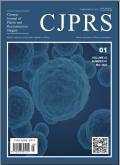Impact of negative pressure wound therapy on inflammatory cell counts in porcine deep dermal burn wound models
Chinese Journal of Plastic and Reconstructive Surgery
Pub Date : 2024-12-01
DOI:10.1016/j.cjprs.2024.09.002
引用次数: 0
Abstract
Background
The inflammatory phase of acute burns can last for 7 days. Meanwhile, severe burns may exhibit persistent inflammation long after the initial tissue damage. Negative pressure wound therapy (NPWT) is recommended to treat various lesions, including burns. This study aimed to compare the number of inflammatory cells on days 3, 14, and 21 in deep dermal burns treated with two different therapies.
Methods
This experimental study was conducted at the Prof. Soeparwi Veterinary Hospital, Yogyakarta, from February to September 2022. A total of 36 wounds created in 10-kg Yorkshire pig burn models were subjected to one of the following treatments: 0.9% sodium chloride or NPWT. These wounds were then sampled as paraffin blocks for microscopic inflammatory cell counts by an anatomical pathology specialist. Comparative analyses of lymphocytes, neutrophils, and plasma cells were performed using IBM SPSS version 22 for Windows.
Results
A significant difference was found only in neutrophil counts on day 3 (5.30 ± 5.41), day 14 (42.83 ± 38.58), and day 21 (9.80 ± 8.97) (P=0.009), with notable changes from day 3 to day 14 (37.53 ± 40.51; P=0.043) and day 14 to day 21 (−33.03 ± 42.79; P=0.049). Meanwhile, no significant differences were found in either lymphocytes or plasma cells between days in either treatment group.
Conclusion
NPWT effectively reduced neutrophil counts on day 21 of treatment, indicating its beneficial effects in preventing prolonged inflammation during wound healing. This demonstrates its potential as an alternative dressing therapy for deep dermal burn injuries.
负压创面治疗对猪深层皮肤烧伤模型炎症细胞计数的影响
急性烧伤的炎症期可持续7天。同时,严重的烧伤可能在最初的组织损伤后很长一段时间内表现出持续的炎症。负压伤口疗法(NPWT)被推荐用于治疗各种病变,包括烧伤。本研究旨在比较两种不同治疗方法在第3天、第14天和第21天的炎症细胞数量。方法本实验研究于2022年2月至9月在日惹Soeparwi兽医医院进行。采用0.9%氯化钠或NPWT处理10公斤约克猪烧伤模型36个创面。然后由解剖病理学专家对这些伤口取样作为石蜡块进行显微镜下炎症细胞计数。使用IBM SPSS version 22 for Windows对淋巴细胞、中性粒细胞和浆细胞进行比较分析。结果中性粒细胞计数仅在第3天(5.30±5.41)天、第14天(42.83±38.58)天、第21天(9.80±8.97)天差异有统计学意义(P=0.009),第3天与第14天差异有统计学意义(37.53±40.51;P=0.043)和第14 ~ 21天(- 33.03±42.79;P = 0.049)。同时,两组间淋巴细胞和浆细胞均无明显差异。结论npwt在治疗第21天有效降低了中性粒细胞计数,提示其对预防创面愈合过程中持续炎症的有益作用。这证明了它作为深层皮肤烧伤的替代敷料疗法的潜力。
本文章由计算机程序翻译,如有差异,请以英文原文为准。
求助全文
约1分钟内获得全文
求助全文
来源期刊

Chinese Journal of Plastic and Reconstructive Surgery
Surgery, Otorhinolaryngology and Facial Plastic Surgery, Pathology and Medical Technology, Transplantation
CiteScore
0.40
自引率
0.00%
发文量
115
审稿时长
55 days
 求助内容:
求助内容: 应助结果提醒方式:
应助结果提醒方式:


